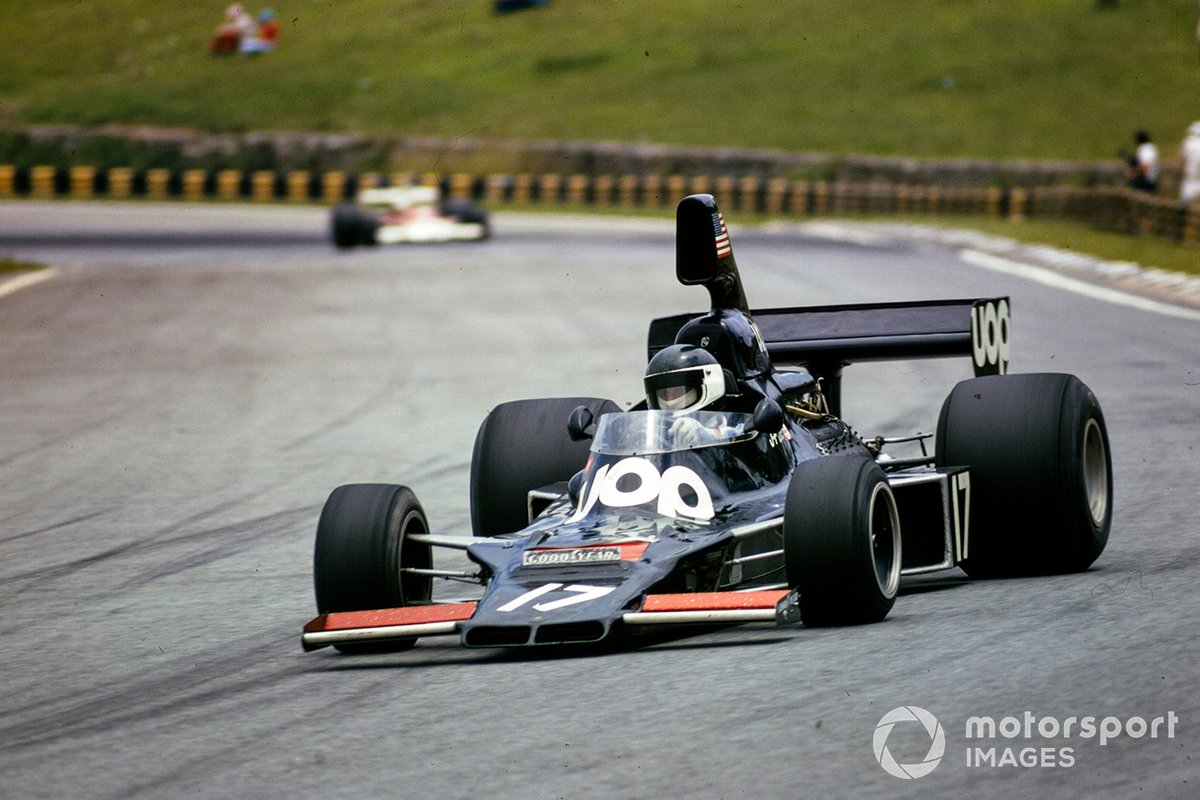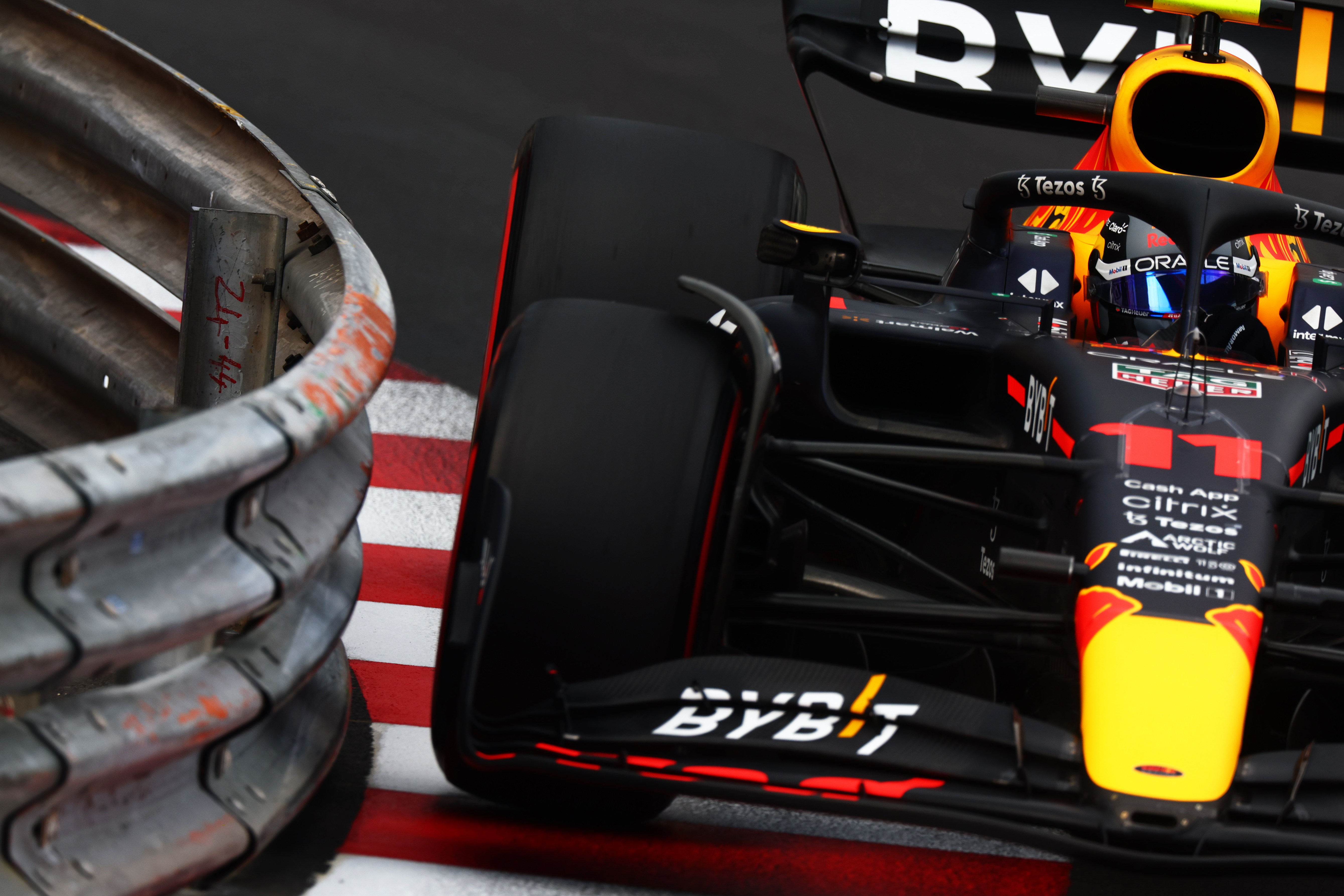American interest in Formula 1 is on the up. The success of the United States Grand Prix in Austin has contributed to Miami joining the calendar, with Las Vegas set to make it three American races on the 2023 schedule.
Michael Andretti also wants to bring his team to the grid. He faces some tough hurdles but, if successful, it would be the second American squad in F1, joining Haas.
Given (or perhaps because of) the strength of American motorsport, there have been few American F1 squads since the world championship began in 1950. We’re excluding the numerous teams that appeared at the Indianapolis 500 when that counted for the world championship between 1950 and 1960, because they were not F1 teams and didn’t contest GPs.
There were a number of privateer American entries that made sporadic appearances at their home GP, perhaps most bizarrely Indy legend Rodger Ward with his Leader Cards Kurtis Kraft-Offenhauser Midget racer in the 1959 US GP. But we’re looking at the teams that ran serious F1 efforts across multiple races.
So, here are our top five American F1 teams, based on their success, impact and longevity.
For the record, the UK-based Team Haas (USA) Ltd that ran Lolas at the end of 1985 and most of 1986 scored six points from its 19 starts. Its best finish came in the 1986 Austrian GP, when Alan Jones led home team-mate Patrick Tambay in a 4-5, albeit two laps behind Alain Prost’s winning McLaren.
We’d also like to give an honourable mention to the Scarab team, which made just two world championship starts in 1960. The front-engined machine was obsolete by the time it arrived, but it makes a tremendous sight and has proved a competitive proposition against its contemporaries in historic racing.
PLUS: The American F1 car born too late
5. Parnelli
Parnelli had the driving talents of Mario Andretti and former Lotus designer Maurice Philippe, but it wasn’t a winner in F1
Photo by: Motorsport Images
Years: 1974-76
Starts: 16
Best finish: 4th
Best qualifying: 3rd
Fastest laps: 1
Points: 6
American racing legend and 1963 Indy 500 winner Parnelli Jones set up the Vel’s Parnelli Jones Racing team with Velko Miletich at the end of the 1960s. The squad, often simply called Parnelli, initially focused on Indycar, where it found immediate success.
Having won two Indy 500s and three USAC titles, Parnelli moved into F1 in 1974. It had ex-Lotus designer Maurice Philippe, plus Mario Andretti to drive the single entry.
The Cosworth DFV-engined VPJ4 made its world championship debut in the Canadian GP. Andretti qualified 16th and finished seventh, just a quarter of a second off scoring a point. He then started third for the Watkins Glen finale but was excluded for receiving assistance from his mechanics outside the pits.
Although Andretti was rarely a top-10 qualifier in the 1975 campaign, he did score points in Sweden and France. However, the loss of Firestone backing left a sponsorship hole that was never filled and the team folded just three races into the 1976 championship, Andretti having finished sixth in the South African GP.
PLUS: The 70s US superteam that tried and failed to crack F1
4. Haas

Kevin Magnussen’s fifth place for Haas in the 2022 Bahrain season-opener was the team’s first points finish since 2020
Photo by: Andy Hone / Motorsport Images
Years: 2016-present
Starts: 125 (following 2022 Australian GP)
Best finish: 4th
Best qualifying: 5th
Fastest laps: 2
Points: 212
Gene Haas’s squad has to be regarded as the most successful new team to enter F1 for many years. F1 is notoriously hard to break into but Haas scored points on its debut in the 2016 Australian GP and finished as high as fifth in the 2018 constructors’ championship.
The team’s HQ is in America – Kannapolis, North Carolina – but it does also have a base in the UK for European events. Haas was the first American F1 team since the unrelated Haas Lola team closed in 1986.
Haas has a strong Italian influence. Dallara, builder of cars for many one-make categories, has made the chassis from the start and Ferrari has always supplied its engines. It also has a technical partnership with F1’s most successful team, helping to keep costs down.
Following its first season running Romain Grosjean and Esteban Gutierrez, Haas fielded Kevin Magnussen alongside Grosjean for four seasons. The team has yet to score a podium finish but has recorded two fastest laps and its best result so far is a 4-5, scored at the 2018 Austrian GP.
With both drivers replaced by rookies Mick Schumacher and Nikita Mazepin – and the decision to focus development on F1’s new rules for 2022 – the 2021 season was Haas’s toughest. It had comfortably the slowest car and failed to score a point for the first time.
But Magnussen returning to replace Russian Mazepin following the invasion of Ukraine (which also led to the dropping of Uralkali sponsorship) provided an unexpected boost. The VF-22 was a major step forward for Haas and Magnussen scored a popular fifth place in the 2022 season opener in Bahrain.
PLUS: Why Haas is back where it belongs in F1
3. Penske

John Watson scored Penske’s only F1 win at the 1976 Austrian GP
Photo by: Motorsport Images
Years: 1971, 1974-76
Starts: 32 (including two running McLaren M19A and two running March 751)
Wins: 1
Podiums: 4
Poles: 1
Fastest laps: 0
Points: 26 (excludes point scored by Penske chassis run by ATS)
America’s greatest motorsport team only briefly tried its hand at F1, but its three-season spell was tinged with both tragedy and triumph.
Penske had run McLarens in the final two GPs of 1971, with Mark Donohue taking a fine third in the wet at Mosport. But the team, now an Indy 500 winner as well as a former Trans-Am and Can-Am superpower, returned with its own chassis in 1974.
Donohue, coaxed out of retirement for the project, finished 12th on the Cosworth DFV-engined PC1’s debut at the Canadian GP. The team planned a full campaign for 1975, running a single car for the 1973 Can-Am champion.
Donohue scored points in the 1975 Swedish GP but became frustrated at a lack of pace and not being able to make the progress he wanted with the PC1. The team switched to a March 751 and Donohue was fifth in the British GP before being suffering fatal injuries in a warm-up crash at the Osterreichring.
PLUS: Mark Donohue’s tragic comeback
Having missed the Italian GP, Penske returned for the US GP finale, now with John Watson aboard the PC1.
Watson drove the PC3 to points in the 1976 South African GP and the car was soon replaced by the PC4, which became a competitive proposition. Third places at Paul Ricard (where he was excluded but then reinstated) and Brands Hatch (after James Hunt’s disqualification) was followed by victory at the Osterreichring.
Having qualified second and overcome early challenges from Ronnie Peterson’s March, the Tyrrell of Jody Scheckter and the McLaren of poleman Hunt, Watson came through to win by 10.8 seconds, a year after the death of Donohue at the same venue. Famously, Watson then shaved off his beard following a bet with Roger Penske.
Despite the car’s competitiveness, there was only one more points finish and Penske ended up fifth in the constructors’ table, behind Ferrari, McLaren, Tyrrell and Lotus.
Roger Penske then decided to focus on Indycar and sold the cars, which ran with limited success under the ATS Racing Team and Interscope Racing banners in 1977. Those outings are not included in our above figures.
PLUS: The incredible life of Roger Penske
2. Shadow

Shadow cars looked great, but were quick too. Here’s Jean-Pierre Jarier at Interlagos in 1975, where he took pole in the DN5
Photo by: Motorsport Images
Years: 1973-80
Starts: 104
Wins: 1
Podiums: 7
Poles: 3
Fastest laps: 2
Points: 67.5
Don Nichols’ Shadow team started as an American outfit but raced under a British licence from the 1976 season. Its one victory came under the British flag, but Shadow should have been a winner before then and was very much American Nichols’ project.
Tony Southgate’s svelte DN1 scored a podium second time out in the 1973 Spanish GP, driven by American George Follmer, and the DN5 set the pace in early 1975. Jean-Pierre Jarier took pole for the first two rounds and led the Brazilian GP comfortably until the cam arm of the fuel metering unit seized.
PLUS: The best F1 cars never to win a GP
Just over a month later, Tom Pryce did win the non-championship Race of Champions at Brands Hatch in the high-downforce car. There were other flashes of pace, including Pryce taking pole for the British GP at Silverstone, but driver errors, bad luck and unreliability prevented Shadow from scoring the win it deserved. Developing the Matra V12-engined DN7 was also a distraction, as was F5000.
The team was never as quick again, but it did get its one day in the sun, or rather rain.
Alan Jones qualified his DN8 14th for the 1977 Austrian GP at the Osterreichring. Most started on slick tyres in the slippery conditions and Jones made good progress, soon reaching second place. When Hunt’s Cosworth DFV blew with 11 laps to go, Jones moved to the front to score Shadow’s – and his – first world championship F1 victory. While Jones would join Williams and go on to become world champion, Shadow sunk further down the grid.
PLUS: The wild Austrian GP that launched a future champion
It lost some of its staff and sponsorship to the new Arrows operation in 1978, there was a legal dispute over the similarities between the DN9 and Arrows FA1 (which Shadow won), and Shadow became part of Theodore Racing before closing its doors in 1980.
It had also been a team tinged with tragedy. Peter Revson was killed in a testing accident at Kyalami in 1974, while Pryce died in horrible circumstances at the same venue in the 1977 South African GP when he struck a marshal running across the road.
1. Anglo American Racers (Eagle)

Dan Gurney won 1967 Belgian GP in his own Eagle car and was often the nearest challenger to the Lotus 49
Photo by: Motorsport Images
Years: 1966-68
Starts: 27 (including three running McLaren M7A)
Wins: 1
Podiums: 2
Best qualifying: 2nd
Fastest laps: 2
Points: 17
It was only around for three seasons, but Anglo American Racers and its Eagles made a big impact on F1, not least because the T1G is widely regarded as one of the finest-looking racing cars of all time.
One of America’s greatest drivers, Dan Gurney left Brabham at the end of 1965 to set up his own team, the F1 arm being based in the UK. Ex-Lotus man Len Terry was brought on as designer and Weslake developed V12s for the Eagle, thus it was not simply a Cosworth customer as with the two previous entries on this list.
Top 10: The best American F1 drivers ranked
Initially propelled by an underpowered Climax engine, the first car made its world championship debut in the 1966 Belgian GP, with Gurney scoring the team’s first points with fifth place next time out in France. They were the first F1 points gained by an American machine.
The V12 arrived towards the end of the season and Gurney won the Brands Hatch Race of Champions early in 1967. The Eagle was fast – Gurney invariably qualified near the front – but reliability was a problem and the V12 tended to lose power during races.
The arrival of the Cosworth DFV-engined Lotus 49 moved the goalposts but Gurney was often its closest challenger. He brilliantly won the 1967 Belgian GP at a record speed and would have won at the Nurburgring had the Eagle not suffered halfshaft failure in the closing stages.
PLUS: Dan Gurney’s greatest races
Despite a third place in Canada, the lack of other finishes restricted Eagle to seventh in the constructors’ table as Goodyear’s support for the team’s F1 effort waned.
Financial issues and the greater availability of the DFV in 1968 rendered the Eagle uncompetitive and AAR ran a McLaren in the final three races of the championship, with Gurney finishing fourth at Watkins Glen, before quitting F1.
All American Racers and Eagle chassis went on to become powerful forces in Indycar, scoring two Indy 500 wins and a USAC title in the 1970s, before AAR ran Toyota’s successful IMSA GTP programme in the early 1990s.

Eagle later enjoyed great success in Indycar and IMSA competition
Photo by: Motorsport Images





